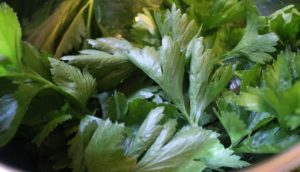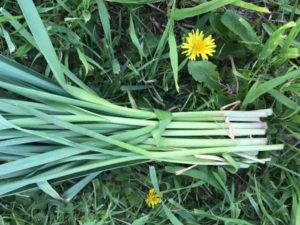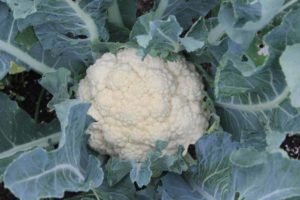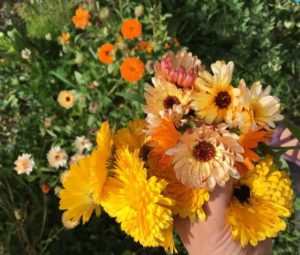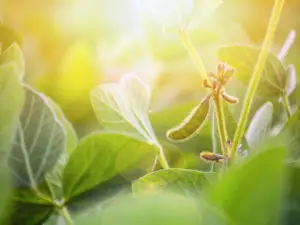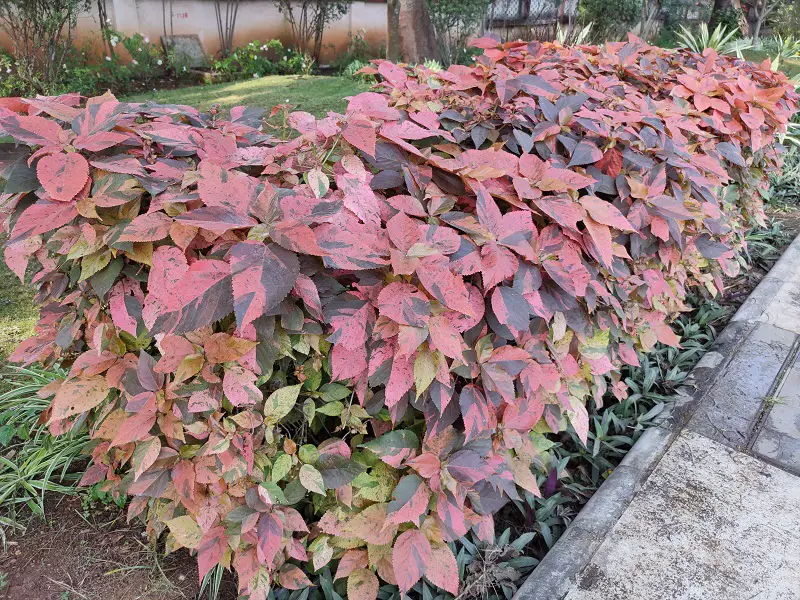
The Copper Plant is an annual or perennial tree that is very popular in tropical gardens due to the beautiful display of color.
The copper plant can be planted all year round. The perennial variety lasts for years.
The Copper Plant is commonly found in the islands of the South Pacific (especially Fiji and Polynesia, where the copper plant is native) and America, where the weather is hot and tropical, such as central and south of Florida.
There are hundreds of varieties (460 species approx.) with foliage of green, pink, beige, yellow, and orange.
The Copper Plant takes center stage in fall when nettle-like foliage replaces unnoticeable flowers with vibrant copper-red leaves.
The Copper Plant is also commonly known as Copperleaf and has received other different names around the world such as Copperleaf, Three-seeded Mercury, Jacob’s Coat, Firedragon, Match-me-if-you-can, Fire Bush, and Fijian Fire Plant.
The Copper Plant has been given the scientific name of Acalypha Wilkesiana and belongs to the Euphorbiaceae family, which are dense, herb-like, flowering shrubs.
The Copper Plant is a perfect addition to any garden or as a houseplant because of its striking, blotched copper foliage.
| Scientific Name | Acalypha Wilkesiana |
| Common Names | Copperleaf, Three-seeded Mercury, Jacob’s Coat, Firedragon, Match-me-if-you-can, Fire Bush, Fijian Fire Plant. |
| Hardiness | Frost-tender. |
| Indoor or Outdoor Plant? | Indoor or outdoor |
| Sun Exposure | Full sun with partial shade |
| Water | Plenty and regular watering. |
| Size | 3 to 6 feet (0.90 to 2m approx.) in height and spreads 3 to 6 feet in diameter too. |
| Soil Type | Nutrient-rich, moist and well-drained soil |
| Soil pH | pH is between 4.5 and 7.5 |
| Flower | Small, narrow, dangling Catkins |
| Growing Difficulty Level | Very easy and fast to grow. |
Copper Plant Appearance and Characteristics
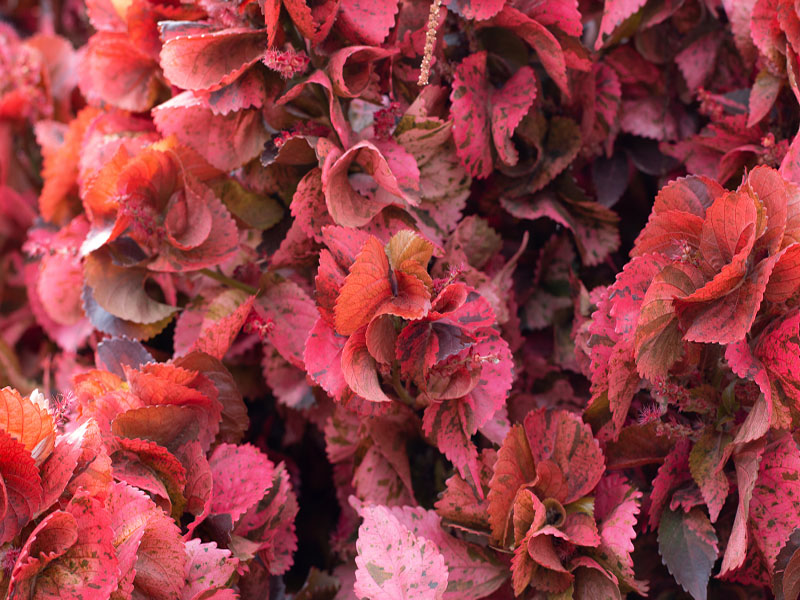
When planted in warm tropical climates, the Copper Plant or Copperleaf is a very low-key plant but requires some nurturing in cooler places.
The Copper Plant is a sun lover and a feeder; therefore, the Copper Plant appreciates nutrient-rich, well-prepared soil.
The Copper Plant is suitable to grow outdoors or indoors, provided a full sun position or light shade and sheltered from strong winds.
There are several types of Copper Plants.
The Copper Plant has dented, oval, heart-shaped, blotchy leaves of blended copper, green, pink, yellow, orange, beige, and red. The striking, bright leaves of the Copper Plant grow up to 5 inches (13cm approx.) long.
Although Copper Plants produce small racemes of flowers of about 3 to 4 inches (10 to 20 cm approx.) long, they are different from normal flowers as they don’t have petals.
This plant produces both male and female flowers called catkins that allow the plant to reproduce.
The male catkins are slim, long, spikes-like, hanging loosely on the Copper Plant.
The female catkins are the same; spiky but a bit smaller and a bit shorter. Both male and female flowers have a similar color to the plant’s leaves; therefore, the blossoms of the Copper Plant are unnoticeable.
The Copper Plants also grow inedible fruits, three-lobed sacks-like.
These sacks are full of numerous seeds inside them. Copperleaf Plants are evergreen and fast growers of up to 6 feet (2m approx.) in height.
Copper Plant Growing Guide
The best time to grow the Copper Plant is in spring; however, if the winters are warm, the Copper Plant can be sown in summer.
The Copper Plant can be grown from seeds in a well-prepared (a mix of cow manure and organic peat humus), moist, and well-drained soil.
Sow the Copper Plant seeds into the ground at about half-inch (1cm approx.) deep, keeping the soil moist.
If planting more than one Copper or Copperleaf Plant, space them out between 3 to 5 feet (0.9 to 1.5 m approx.) distance between them, so the Copper Plants don’t compete for nutrients and space when growing resulting in healthy plants.
The Copper Plants spread widely for up to 6 feet (2m approx.), so take this into consideration when planting as a hedge, in a driveway, or border.
It thrives if planted in the ground outdoors in a sunny spot or indoors in containers, provided the container is at least twice the size of the root ball.
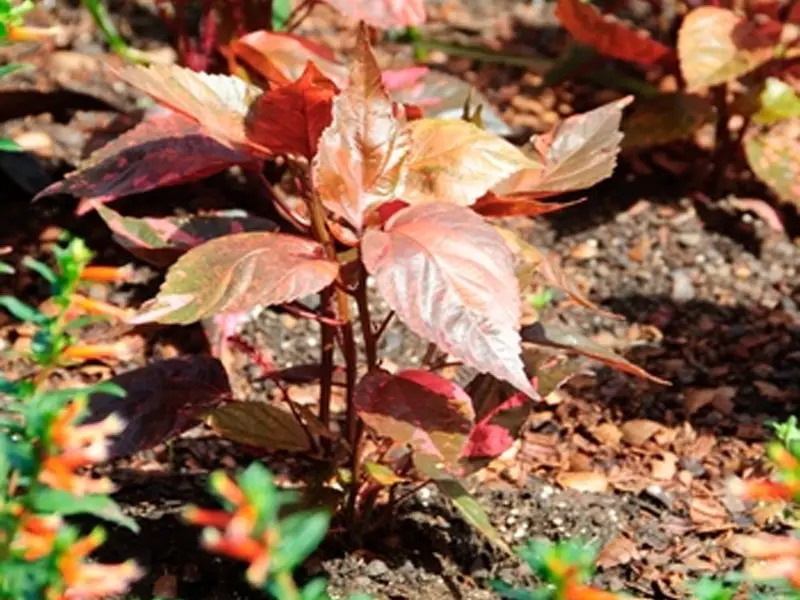
Place the plant in a bright, warm position.
Water the Copper Plant generously once planted and then regularly a couple of times in a week when the soil feels dry.
Although the Copperleaf Plant tolerates dry spells, it should not dry out as this compromises the Copper Plant’s root health system.
Keep a regular watering schedule for the Copper Plant to guarantee the growth and production of flowers.
Trim occasionally to give shape and control the height of the Copper Plant; trimming branches is a commonly better practice rather than using hedge trimmers.
The Copper Plant can be hard pruned in spring to stimulate growth, eliminate damaged branches, and keep it to the required size.
Adding fertilizers to the soil helps the Copper Plant retain nutrients. Enrich the soil with granular fertilizers three times spread in a year: spring, summer, and fall.
Water
The Copper Plant craves water.
Its ground should be constantly moist.
Keep the soil moist constantly all year round.
However, overwatering the Copper Plant is damaging as it affects its roots, causing them to rot.
If your Copper Plant is indoors, make sure the container has enough orifices to drain the excess water. Water the Copper Plant at the soil level rather than overhead.
Avoid your Copper Plant sitting in water.
Decreased watering in winter months as the Copper Plant uses less water.
Check for soil dryness before the next schedule.
The Copper Plant loves a bit of mist on its leaves, especially if it is planted indoors or on summer days, as this creates a bit more humidity necessary for healthy, steady growth.
Light
The Copper or Copperleaf Plant is a true lover of full sun but needs to be protected from extreme heat, for example, the sun at midday, as this causes their foliage to burn, leaving marks on their leaves.
The Copper Plant tolerates partial shade at the expense of bright foliage.
The more amounts of direct sun the Copper Plant receives, the brighter its leaves are.
Indoor Clopper Plants can be protected from extreme heat if placed in a position where they get indirect sun.
Soil
The Copper Plants crave nutrient-rich (rich in humus) soil, moist and well-drained.
The optimal soil conditions and a pH level slightly acidic between 4.5 and 7.5.
Feed the Copper Plant with liquid fertilizers every two weeks during the growing period (spring to early fall).
Temperature and Humidity
The Copper Plant thrives best in tropical climates, sun all year round with temperature oscillating between 18 to 27C (65 to 80F approx.).
However, the Copper Plant can tolerate a minimum temperature of 16C (60F approx.) in winter.
The Copper Plant slows growth during the winter months, so watering and humidity must be adjusted.
The Copper Plant does not require fertilizer during the winter months.
Reschedule feeding in spring.
Potting and Repotting
The Copper Plant is a vigorous plant that grows well in containers, provided the container is twice as big as the Copper Plant root ball.
Repot the Copper Plant to a bigger pot, again at least twice the size of the root ball, if after checking, the roots are outgrowing the container (commonly, the roots come out of the orifices of the pot).
Submerge your Copper Plant in water until completely soaked to facilitate the removal from the previous pot. Repotting your Copper Plant in spring is the best practice.
Fill the new pot with soil and water again.
Propagating and Pruning
Propagating Copper or Copperleaf Plants is fairly easy.
- Use the stem cutting propagation method in spring.
- Cut a stem from the Copper Plant of about 3 to 4 inches (8 to 10cm approx.) long.
- Submerge the stem of the Copper Plant into rooting powder and plant it in well-prepared soil (mix of peat and sand). The temperature should be constant at about 24C (75F approx.) for the new Copper Plant to thrive.
The Copper Plant is a fast-growing shrub, so it’s good practice to prune it from mid to late spring when it is vigorously growing.
Pruning your Copper Plant guarantees healthy and more dense foliage.
New Copper Plant shots appear over the night.
When propagating Copper Plants from seeds, sow them in the ground at about half-inch (1cm approx.) deep, in moist, well-drained soil. Full sun position.
If you decide to sow the Copper Plants seeds in winter, cover them over to keep the soil constantly moist.
Advantages of Growing Copper Plants
The Copper or Copperleaf Plant is a striking plant due to the bold, colorful foliage display they offer.
The Copper Plants are a great addition to house décor in the living or dining rooms because, besides their unusual, dense foliage, they give a good vibe to a bright room.
This plant is a great attraction for pollinators too, benefiting your garden greatly over the seasons.
The Copper Plant provides you with color all year round, updating your interior design options.
They are a great accent color when planted in containers.
Plant your Copper Plant outdoors in a hanging basket or on the patio in a container so it can be brought indoors in winter when the weather is not ideal for these plants.
You may find that the Copperleaf or Copper Plant is also harvested for medicinal purposes.
Some research has demonstrated that the Copper Plant might alleviate gastrointestinal disorders and effectively treat diabetes and hypertension.
The Copper Plant might be used to treat fungal skin diseases such as mycoses, pityriasis Versicolor, candida intertrigo, and Tinea.
Copper Plant Pests, Diseases, and Problems
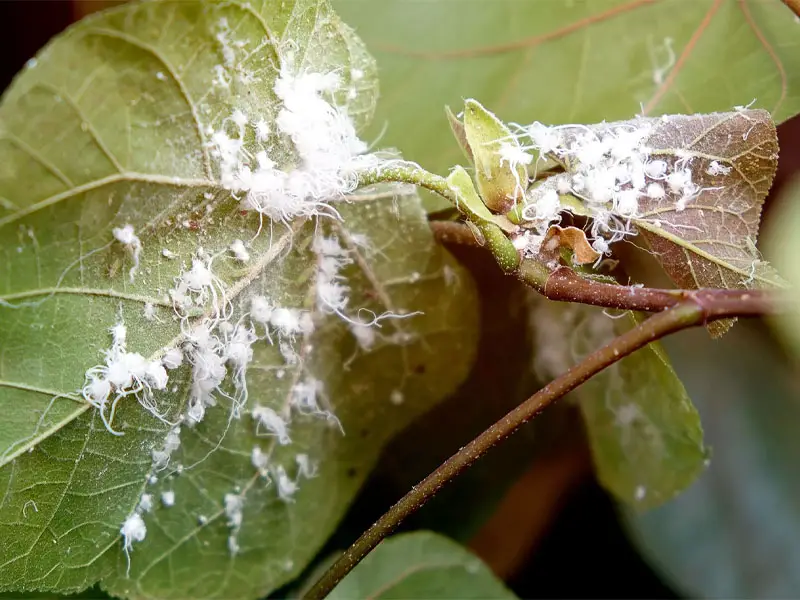
The Copper Plant can be a target for pests and diseases as any ornamental plant, although it is not very common in Copperleaf Plants.
If the Copper Plant is growing indoors, it can be attacked by scale insects, glasshouse spider mites, whiteflies, and mealybugs.
Scale insects stick to the stems, leaves, branches, and fruits of the Copper Plant and suck their sap.
In most cases, they become unnoticeable until it’s too late when they have damaged the Copper Plant or killed it.
Glasshouse Spider mites live underneath the leaves of the Copper Plant.
Spider mites are common in hot, dry conditions.
You first notice them when the leaves have yellow or brown spots, and the Copper Plant shows some damage.
Whiteflies and mealybugs are sap-sucking insects present underneath the leaves of the Copper Plant and very often in ornamental plants, especially when the weather is warm.
It causes damage to the leaves, causing the plant to fall if the infestation is massive.
If the Copper Plant is growing in the garden, although it’s generally a disease-free plant, it can be affected by downy mildew, powdery mildew, rust leaf spots, and fungal root rots caused by overwatering.
Routinely check your Copper Plant for any signs of infestation.
Isolate the Copper Plant and treat it with insecticides or fungicides, respectively.
Where to Find High-Quality Seeds
Apart from the weather conditions, well-prepared soil, and water, the quality of the seeds plays a very important role in guaranteeing a healthy plant.
Get the Copper Plant seeds from a trusted supplier or garden center.
Cuttings from an existing plant are another way to enjoy growing this beautiful plant.
FAQs
Is the Copper Plant toxic?
The Copper Plant may be toxic if ingested in large quantities, and children can cause nausea, vomit, or diarrhea.
The Copper Plant is not poisonous to dogs or cats.
How to avoid pests attacking my indoor Copper Plant?
Keeping a good level of humidity indoors during the winter months helps the Copper Plant to fight pests.
These pests (most common scale insects) attack the Copper Plant when the air is dry.
Increase humidity with a humidifier or a spray mist on the leaves occasionally.
Why doesn’t my Copper Plant grow?
Feed the soil with a humus-rich component.
Fertilizers should be used in a liquid form, from spring to late fall, every 2 or 3 weeks during the growing period.


